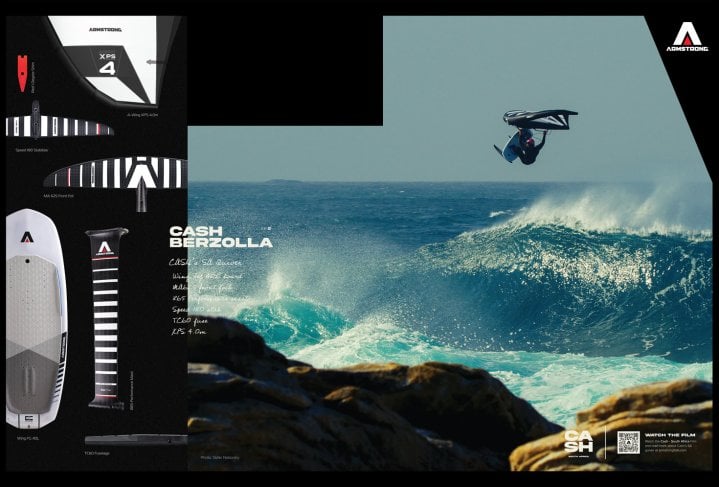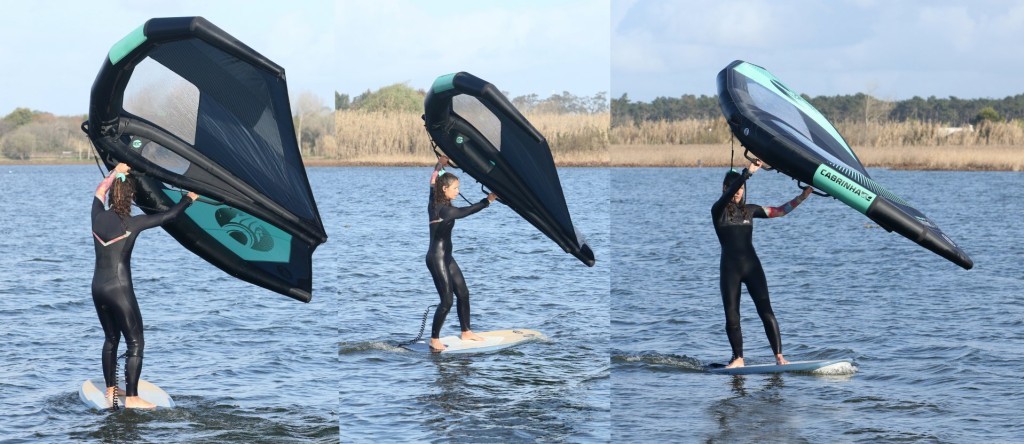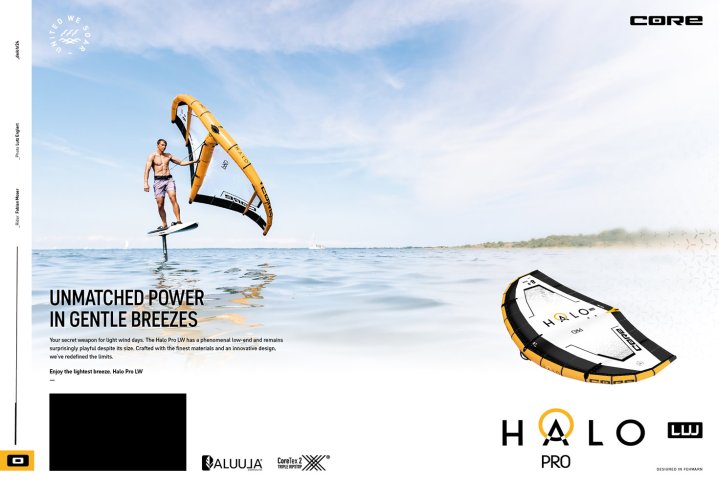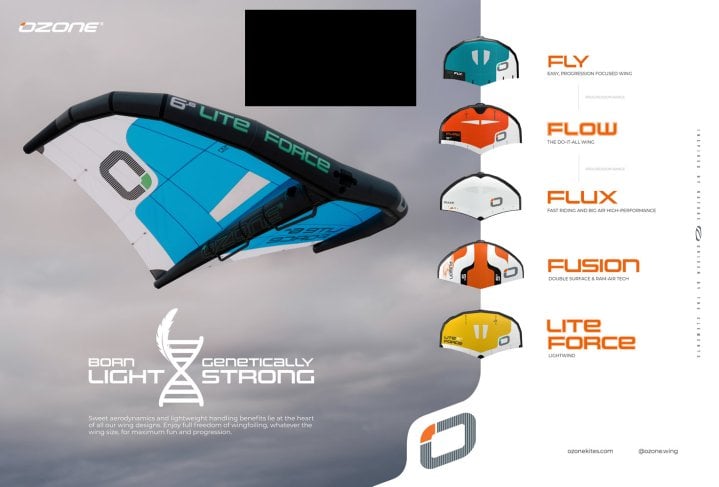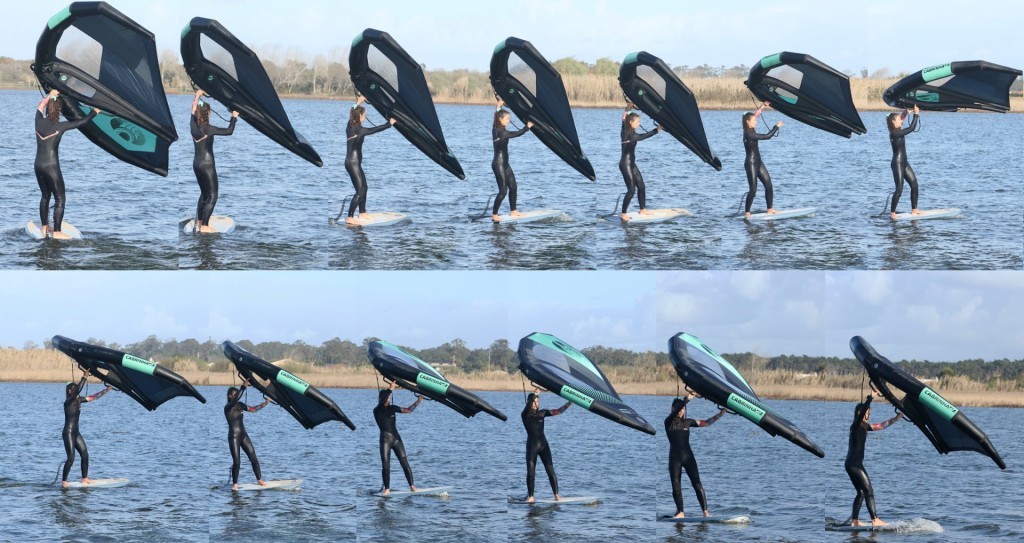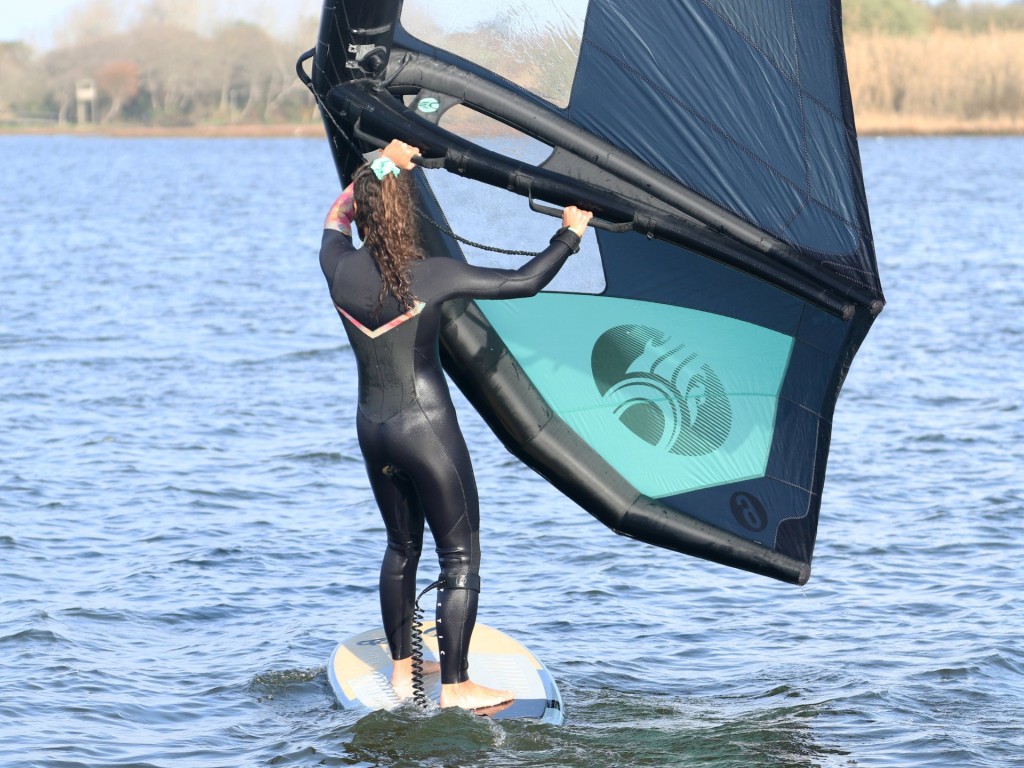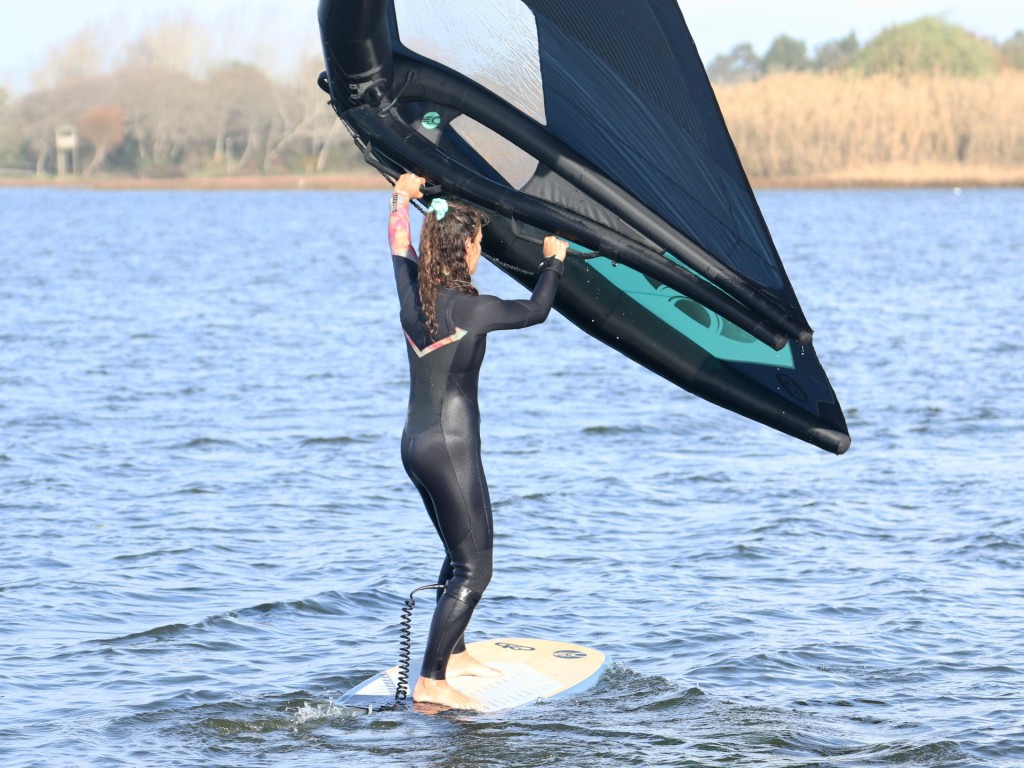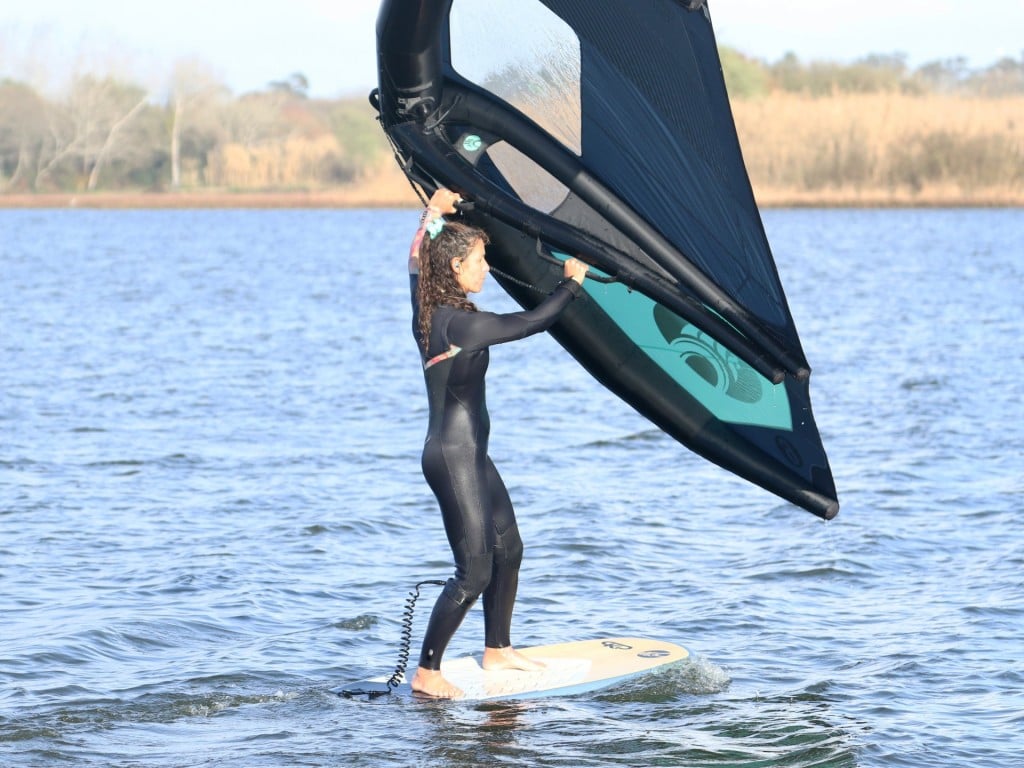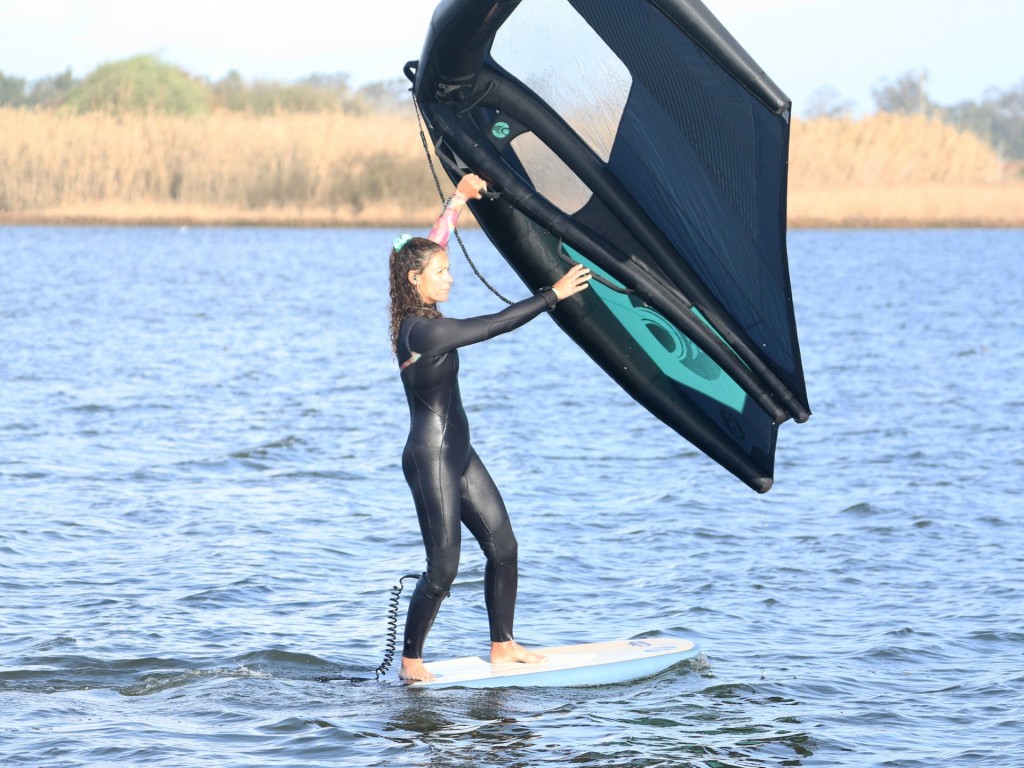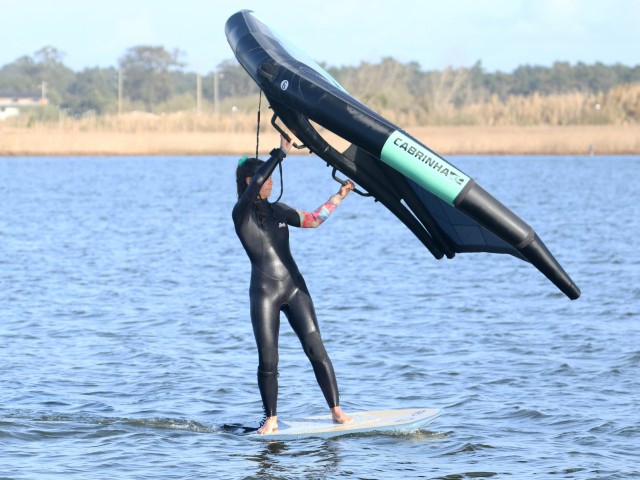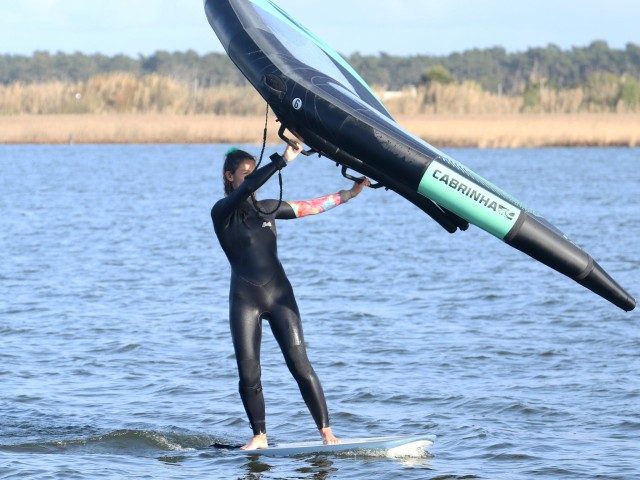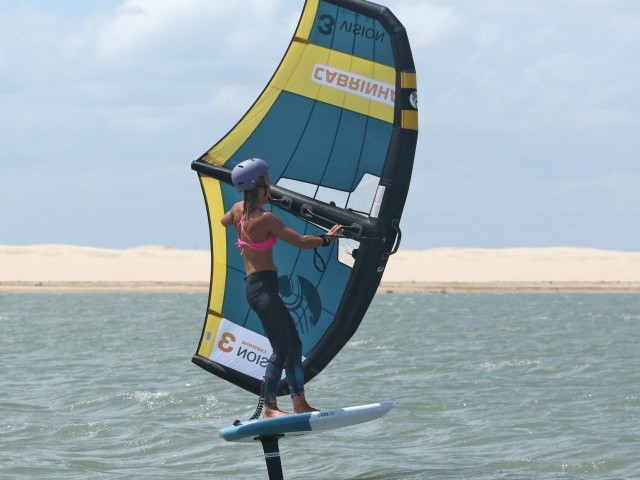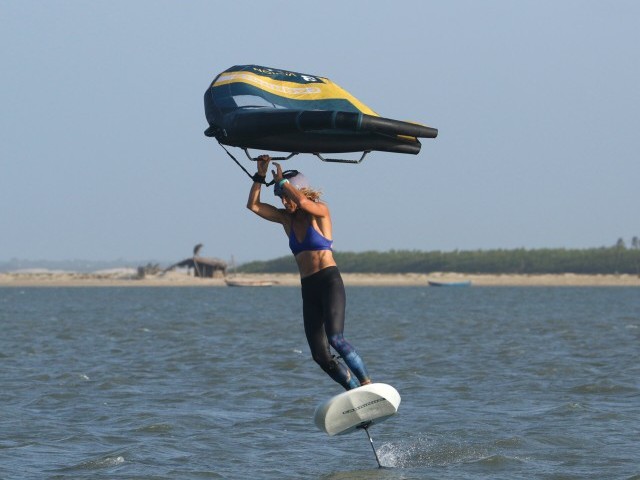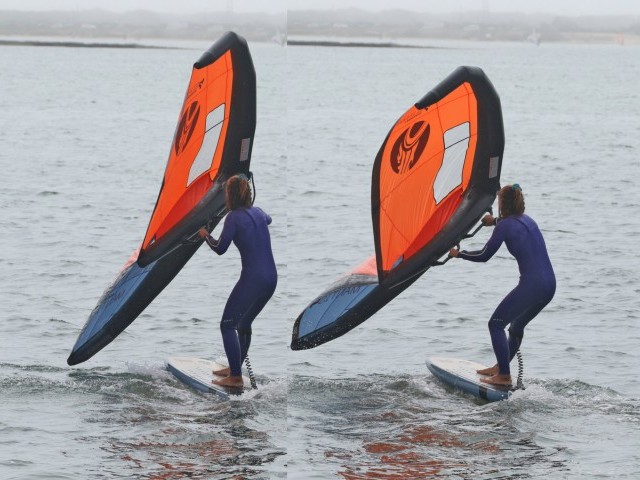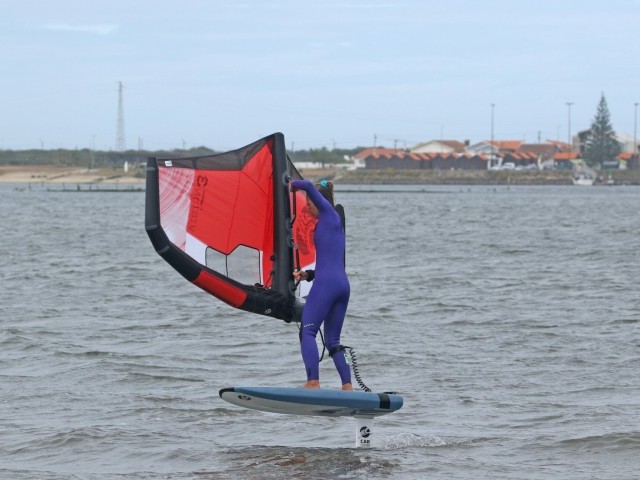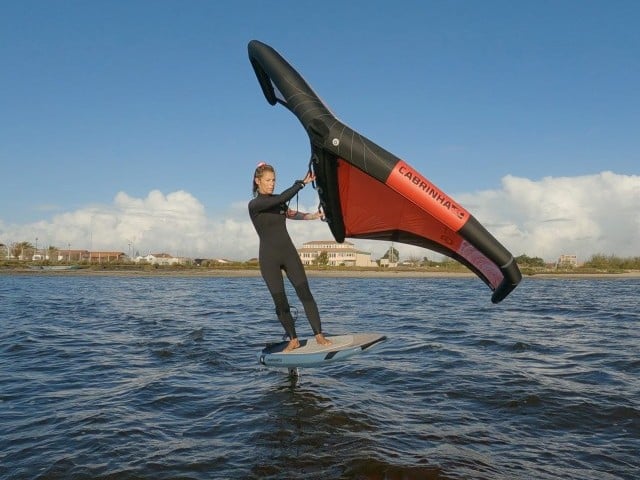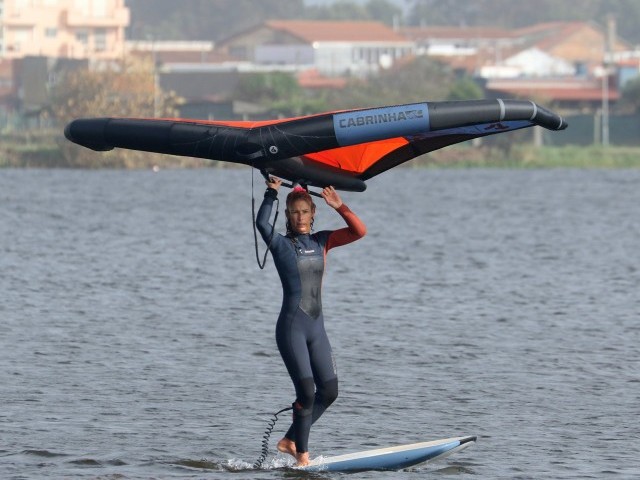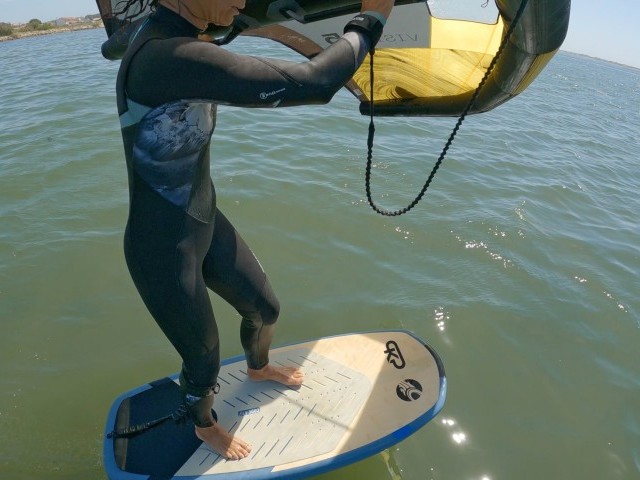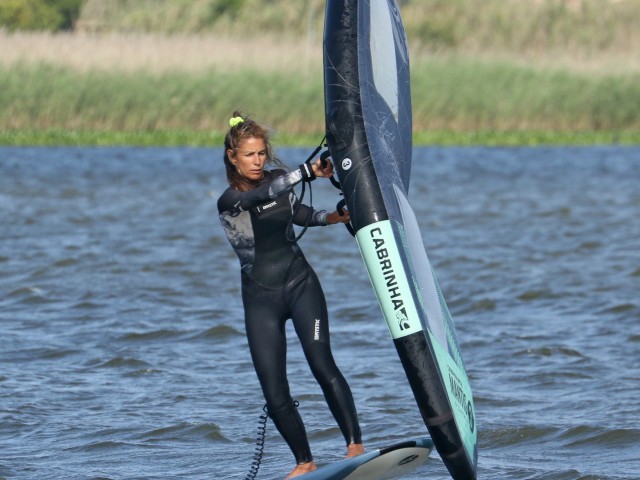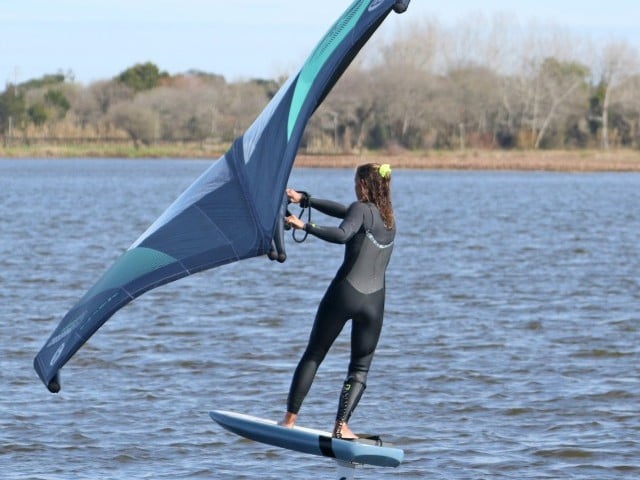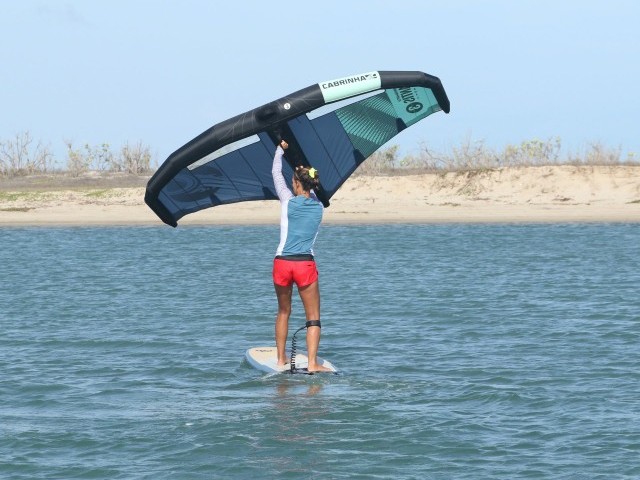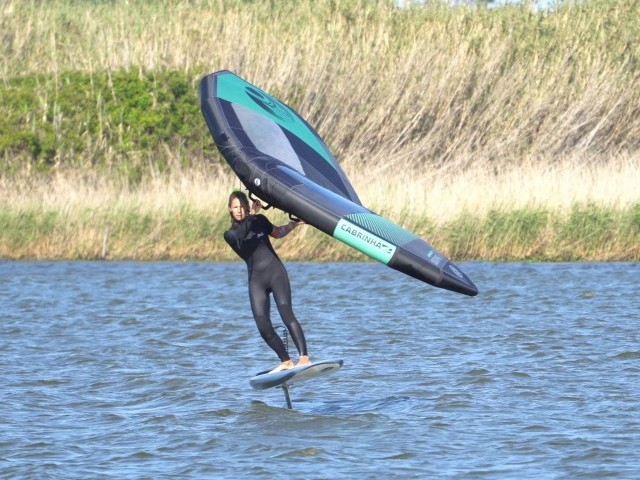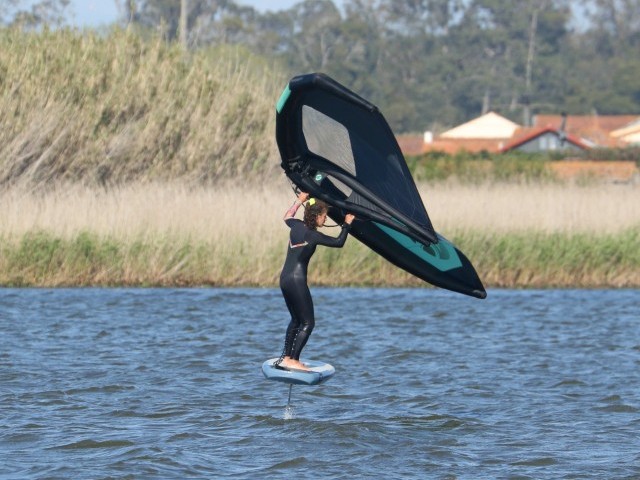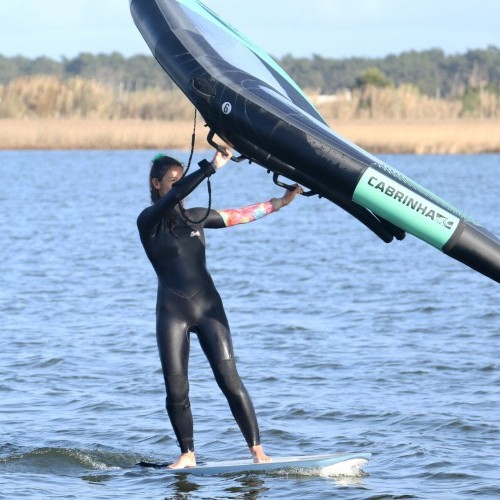
Wing Foil Gybe Part 1 – Heel to Toe Gybe off the Foil
Technique / Wing Foil
Introduction
We know that many of you are keen to move onto riding and pumping, but before racing off into the grand bleu in a flurry of youthful exuberance, we thought it both prudent and wise to have a look at turning around, and more specifically the heel to toe/switch off the foil. So yes, today is about woffing (winging off the foil)!
Now before you go stuff your hands in your pockets and kick a can down the street in a huff, there is a carrot hanging on a very short stick here. Other than the more obvious advantage of being able to change direction without submerging yourself, gybing off the foil will be hugely beneficial to your forthcoming gybe on the foil. Much like cultivating kefir grains, we’re going to take the skills that you already have and grow them into more.
What is a gybe? Just in case you’re not familiar with the nautical lexicon. Gybing is turning around whilst bearing away from the wind. You’ll turn from across the wind through downwind and eventually back to across the wind in the other direction. To be clear it’s the opposite of tacking, which is turning around by turning up into and through the wind. We should be clear that the disadvantage of gybing compared to tacking, is that you will lose ground when gybing. However, as you’re all now masters of riding upwind this won’t be a problem!
Our plan here is to complete the gybe without changing your feet, so you’ll end up toe side (if you’ve been a kiter), switch (if you’ve been a windsurfer) or whatever you care to call it if you’re new to this water sports game. Probably unusual and unstable will be the most fitting names for the time being. There will be a sticky moment in the middle when you’ll need to “flip” your wing, so that it points towards where you’d very much like to go.
You can see the basic direction change of a gybe in Sequence 1. Karine is on the way out, she turns downwind and as if by magic comes back riding switch. Now it’s your turn to learn some magic.
Back to the carrot(s)!
OK, first off, you’ll have a method to turn that you can use when woffing, whether in light winds or lulls.
It’s a fantastic way to explore new directions, the wing flip, foot position, riding switch and even a cheeky foot change with limited consequence.
It leads perfectly into foiling gybes. When you learn foiling gybes there will be plenty of times when you touch down, and by already having this woffing gybe in the bag, you’ll have the tools and confidence to make it out.
With the exception of carving on the foil, almost everything else is similar, so you’ll get your bearings and polish the necessary skills which will make a humungous difference when you come to the foiling version.
Hopefully we’ve convinced you that this is not only a useful move in its own right, but an absolute fundamental move for your onward wing foil journey.
Final thoughts before we get to the nitty gritty.
You can practice and learn this on both sides, but be aware that the switch part will feel less comfortable coming out on one side than the other. We all have a favoured leading foot, as you’ve no doubt already discovered. No panic though, there is another gybe that we can learn later on…
And don’t forget your dynamic position. Throughout this move you are not fixed and frozen, you can make small necessary adjustments to maintain trim, power and balance.
So, with all that in your minds, let’s have a look at what’s involved to make this heel to switch woffing gybe a reality.
The Set Up Pic A.
Familiar ground, making sure that you can control your board and your wing. Starting down low at your feet. The usual applies regarding trimming the board, so make sure your feet are positioned so that you have control of the board both nose to tail and rail to rail. Front foot pointing slightly forwards on the upwind side of the board’s centre line. Back foot sufficiently across the centre line. You will need your feet set wide to be able to control the board once you’ve turned and are switch, unless the wind is very light. As far as hands go, it depends on handles, booms and the like. Your aim is to be able to push the wing far forwards to bear away and keep wind in it. Don’t have your front hand right up against the leading edge. Position your rear hand far enough back that it doesn’t prevent you from pushing the wing forwards and allows you to stay balanced and control the wing. In short, probably as you would normally be positioned when bearing away.
Initiating The Gybe Pic B.
This part should also be second nature by now. To kick things off and start your gybe you’re going to bear away. Your aim is to turn the board as far as possible, all the way until it’s pointing down wind. You know the score, keeping the wing pointed forward and sheeted in, push your front hand forwards towards the nose of the board. As your hands are connected by your wing, this will bring your back hand forward. As the wing pulls, push through your front leg to turn your board away from the wind.
The bigger the wing movement, the quicker the board will turn. If the wind is very light, you’ll need some patience. If the wind is strong, you’ll have to be dynamic and resist by dropping your weight and controlling the power with your back hand.
Extra Push Pic C.
Now we’re getting into unchartered territory. You’ll have practiced bearing away and then straightening out with the aim of accelerating onto a broad reach. This time you’re not (yet) looking for speed, you just want to carry on turning, until you’re running with the wind. To turn the board all the way you need to keep your wing where you put it – which was forwards towards the nose! However, as your board turns the nose no longer has any relevance. You need to keep your wing pushed to the outside of the turn. Simultaneously you should concentrate on staying balanced over the board. This will be all the more possible if you flex your ankles and knees, lowering your centre of gravity. Make sure you don’t dump power unless you need to, or over sheet. Keep your wing sheeted into the wind, across the wind.
Wing Flip Pic D.
Once the board is pointing downwind, you’re halfway there. The bad news. Unfortunately, this next part takes your deep into the realms of wobbly. Up until now you’ve had the wing pulling, even if just a touch, which gives you something to balance against. You’re now going to release what’s been your lifeline. This is such an important part of winging, back to balance. It’s not about having a ballerina’s poise, or a gymnast’s balance, but about having your weight centred over your board. The good news. Once you can do this on moving water, it’ll seem easier on a balanced foil. Every attempt will stand you in good stead.
As the board nears downwind you can lift your front hand higher and push your back hand down so that the pull directs you downwind. From this position you can release your back hand, letting your wing fly momentarily above you head. You can now swap hands!
Time to pause and have a look at how you swap hands. There is no one way that suits everybody and all situations, and there is no right way or wrong way. Personal preference and the situation dictate. That said we have a preferred method for riding and entering a gybe. If we rewind to Pic. B and bearing away you can see that Karine has an overhand grip whilst riding. The main advantages being that it’s more natural to keep your arm straight this way, you feel the pull in your shoulder and you’re less likely to accidentally interfere by unwittingly using a strong bicep to pull on your front hand.
As you lower your back hand to bring your front hand up, both hands will move with the wing. Your front hand will end twisted above you. All you need to do is reach up with your free hand and grab the handle. If you grab it palms facing each other you’ll end up with an underhand grip with your new front hand, which you can then twist out of. To twist out make sure you sheet out so that the wing is hovering. You can then hold the handle with just your thumb from above, open your fingers and then twist your fingers around to grab the handle from above. This may sound like a recipe for disaster, but with no power in your wing you’ll be amazed at how wonderfully this works – just don’t sheet in with your back hand until you’ve got a good grip. You can see the mechanics in action here in Sequence 2.
Or you can reach under so that you end up with an overhand grip. You will find that you’ll become accustomed to both eventualities. Once your new front hand is on, you can release the other one, reach back and grab a rear handle.
The other option which you may want to explore, is changing to an underhand grip before you gybe. Not our cup of tea, as you may not have the time or inclination to dump power in order to twist your grip around, but it could be yours. If you wing with an underhand grip, this will of course be the perfect fit.
You can and should practice this on Terra Firma, but the beauty is that you’re in no hurry when woffing. You’ll have time to practice and adapt.
Finish The Turn Pic E.
Once you’ve two hands on the wing, you need to get the board turning again so that you can go back the other way. The first thing you’ll notice is that the board suddenly feels so different. As soon as there is any wind in the wing, it wants to tip your weight onto your heels. You need to counter this by flexing your ankles and dropping your knees over the centreline. Avoid the temptation to break and bend at the waist, as it will pull you off balance. This might also be time for a quick wiggle to get one, or both feet a touch more centred or across the centreline, even if moving is the last thing on your mind. Once steady, you can sheet in by extending your front arm and pulling in with your back hand. Move the wing back to steer the board around. This should put pressure through your back leg and force the nose to turn. If the wind is very light you will need to push against the tail of the board to encourage it to turn. In your switch position this may well feel like you’re pulling your back foot under your bum with your hamstring.
Switch Stance Pic F.
Now that you’re moving again, a sense of balance should be restored. As such you’re in a position to ponder your switch position. First thing is the wing. You want it driving you forwards, not pulling you downwind. The principles are the same, you want to get your wing pointing in the direction you’re going in. This means bringing your front hand down and you back hand up to transform your wing back into that forward pointing >. You also need to hold the wing forwards in front of you once you’ve turned. You’ll notice that you don’t have the same reach because you’re standing facing the wrong way! To compensate for this, you’ll need to make a real effort to hold it forward with your front arm fully stretched out. Turn your hips and shoulders so that your chest faces forwards. This will help you hold the wing forwards and sheet in. Finally make sure that you’ve got your ankles flexed and knees across the centre line. If the board tilts downwind, shimmy your feet a little bit further across.
This will probably feel a bit odd and twisted at first, but it’s well worth practicing, as once again, you’ll likely be doing this on the foil sometime in the future! We can’t emphasise enough how important it is to practice your switch stance.
Brucey Bonus - Foot Change Sequence 3
Having lost some ground gybing, and potentially some in switch, you’ll be more than eager to stand the right way round and keen to get back up wind. As such it’s the perfect time to think about changing your feet. This won’t be quite the same as on the foil, but it’s a very good place to start and brilliant confidence booster which proves that you’re not glued to the spot. Time for your Cuban heels and a spot of Salsa. Before switching your feet, move your back foot up the board so that your feet aren’t so wide. Keeping your chest open your aim is to step your front foot back towards your rear foot, placing it just in front, in a Charlie Chaplin duck stance. As soon as it’s down, move your back foot forwards. This may sound over simplified, just a quick two step, but it’s exactly what you want. A move that you can do quickly and efficiently. The trick is to keep the wing forwards with your upper body open, just using your legs, as this way the board won’t be affected as much. It goes without saying, that you can’t rest on your laurels with two feet back on the board. If you do, your trusty steed will rear up and buck you off. The quicker you get this done and dusted, the sooner you’ll be back in your comfy place.
There you go, time to pop the cork, you’ve just gybed, ridden switch and changed your feet – quite something:)
As a final note on all things woffing, the lighter the wind, the harder it will seem. You will spend more time balancing whilst both your wing and your board will be slower to react. Find some flattish water and a gentle breeze. You can and should use your usual set up, but be aware that the smaller your board, the more precise you’ll need to be with your foot placement throughout.
Have a look at the Sequence 4 for a step by step walk through and don’t forget the accompanying video:) In all the images and photos Karine has very little breeze – great practice.
Brilliant, enjoy your woffing. C&K
This technique article was in Issue 11 of Tonic Mag.
Related
By Christian and Karine



